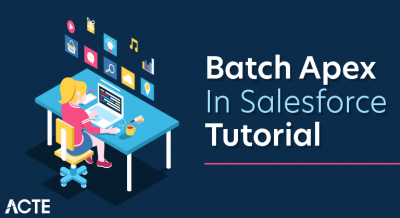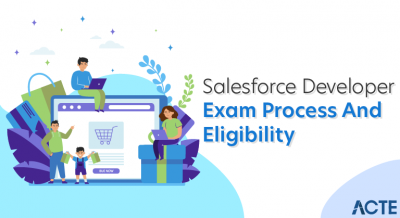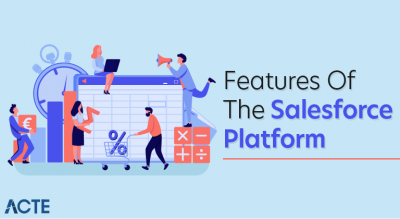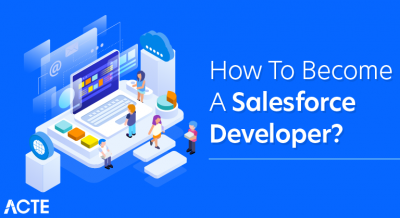
- Introduction to Salesforce Development
- Apex Programming Language
- Triggers and Batch Processing
- Visualforce Pages and Lightning Components
- Data Modeling and SOQL Queries
- Salesforce Development Tools and IDEs
- Debugging and Troubleshooting
- Version Control and Deployment
Introduction to Salesforce Development
Salesforce development involves customizing and extending the Salesforce platform to meet specific business needs beyond its standard functionality. It combines declarative tools such as Process Builder, Flows, and the Lightning App Builder with programmatic approaches using Apex code and Visualforce or Lightning Web Components (LWC). Declarative development enables admins and non-developers to automate workflows, build user interfaces, and create reports without writing code, making it accessible to a broad range of users. However, when complex logic, integrations, or custom user experiences are required, developers use Salesforce’s programming languages and frameworks to build tailored solutions, as taught in Salesforce Training. Apex, Salesforce’s proprietary language, allows developers to implement business logic, manage database operations, and create custom APIs. Lightning Web Components offer a modern, JavaScript-based framework for building responsive and dynamic user interfaces that enhance user experience. Salesforce development is supported by powerful tools like the Salesforce CLI, Developer Console, and integrated development environments (IDEs) such as Visual Studio Code, which streamline coding, testing, and deployment. Moreover, Salesforce’s multi-environment setup comprising sandboxes for development and testing, and production for live use ensures safe and efficient release cycles. Developers must also consider Salesforce’s governor limits and security model to write efficient and secure code. Overall, Salesforce development enables organizations to tailor the platform to their unique processes, improve productivity, and drive innovation by leveraging both low-code and pro-code approaches.
Are You Interested in Learning More About Salesforce? Sign Up For Our Salesforce Training Today!
Apex Programming Language
Apex is Salesforce’s proprietary, strongly typed, object-oriented programming language designed specifically for developing custom business logic on the Salesforce platform. It enables developers to write code that runs on the Salesforce servers, allowing for the creation of complex applications, custom workflows, and triggers that extend the platform’s out-of-the-box capabilities. Apex syntax is similar to Java, making it accessible to developers familiar with traditional programming languages, which aids in Scaling Salesforce DevOps. One of Apex’s key strengths is its seamless integration with Salesforce’s data model and security framework, ensuring that code respects user permissions and sharing rules. Developers use Apex to automate processes that cannot be accomplished with declarative tools alone, such as custom validations, complex calculations, and asynchronous processing. Apex supports both synchronous and asynchronous execution, providing flexibility to handle tasks like batch processing and callouts to external systems. It also integrates with Salesforce’s event-driven architecture through triggers, which execute code before or after records are inserted, updated, or deleted.
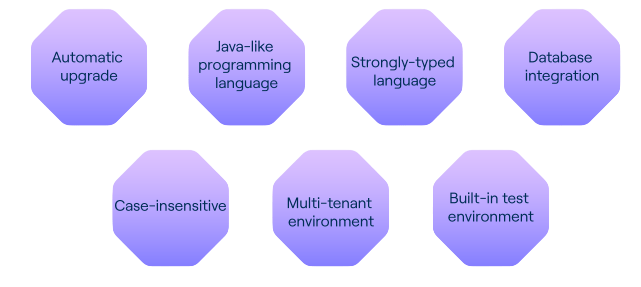
To maintain platform stability, Apex operates within governor limits that restrict resource usage, encouraging efficient and scalable code design. Additionally, robust testing frameworks require developers to write test classes and methods to verify functionality and ensure code quality before deployment. Overall, Apex is a powerful tool that empowers Salesforce developers to tailor the platform precisely to business requirements, enabling sophisticated customizations and integrations that drive innovation and operational excellence.
Triggers and Batch Processing
- Definition of Triggers: Triggers are Apex code blocks that execute automatically before or after specific database events like insert, update, delete, or undelete on Salesforce objects. They help enforce custom business logic that cannot be handled by declarative tools.
- Types of Triggers: Salesforce supports two types of triggers before triggers (which run before a record is saved to the database and can modify or validate data) and after triggers (which run after the record is saved and are typically used for related record updates or external integrations).
- Use Cases for Triggers: Triggers are commonly used for data validation beyond standard rules, complex field updates, enforcing cross-object logic, and automating tasks that require multiple records or objects to be processed together.
- Governor Limits and Best Practices: Because Apex code runs in a shared environment, Salesforce imposes governor limits on resources like CPU time and database operations, which complements Understanding OWD in Salesforce for Security.
- Batch Processing Overview: Batch Apex allows processing large volumes of records asynchronously by breaking data into manageable chunks. This is useful for operations that exceed synchronous limits or require extensive processing, such as data cleanup or mass updates.
- Batch Apex Structure: A batch class implements the Database.Batchable interface with three methods- start(), which collects records; execute(), which processes each batch; and finish(), which runs post-processing tasks.
- Combining Triggers and Batch Processing: Triggers often initiate batch jobs when complex or time-consuming processing is needed. This approach improves performance, prevents limits from being exceeded, and ensures scalable automation for large datasets.
- Visualforce Overview: Visualforce is Salesforce’s original framework for creating custom user interfaces using a tag-based markup language similar to HTML. It works with Apex controllers to display and manipulate data, primarily used in Salesforce Classic.
- Lightning Components Introduction: Lightning Components are a modern UI framework built with JavaScript and HTML, designed for building dynamic, responsive, and reusable components in Lightning Experience and Salesforce mobile apps.
- Rendering Differences: ViVisualforce uses server-side rendering, meaning pages are generated on the server before reaching the user, a key concept covered in Salesforce Training.
- Development Flexibility: Visualforce suits simple or classic-style pages, while Lightning Components offer enhanced flexibility and interactivity, supporting complex, modular app development with reusable components.
- Component Reusability: Lightning Components promote modular, reusable design, enabling developers to build components once and deploy them across various pages and apps, unlike monolithic Visualforce pages which are less modular.
- Data Integration: Both frameworks interact with Salesforce data through Apex and SOQL, but Lightning Components can also use Lightning Data Service, simplifying data access without custom Apex, improving performance and ease of use.
- Future Focus: Salesforce is actively advancing Lightning Components as the preferred UI framework. Visualforce remains supported for legacy apps, but Lightning Components represent the future of building scalable, modern Salesforce interfaces.
- Developer Console: A built-in, web-based tool in Salesforce for quick Apex coding, debugging, and running SOQL queries. Ideal for small changes and immediate testing.
- Sandbox Environments: Copies of production orgs used for safe development and testing. Sandboxes ensure changes can be validated before deployment to production.
- Visual Studio Code (VS Code): A popular, free code editor with Salesforce Extensions that supports Apex, Lightning Web Components, and Salesforce DX, essential for working with sObject in Salesforce.
- Salesforce CLI: A command-line tool that enables developers to manage orgs, deploy metadata, run tests, and automate tasks. It’s essential for modern, source-driven development workflows and CI/CD integration.
- Workbench: A web-based platform used for data management tasks like querying, updating, and deleting records. It’s especially useful for testing APIs and managing Salesforce data quickly.
- Salesforce Extensions for IDEs: While VS Code is the preferred IDE, Salesforce also offers extensions for other IDEs like IntelliJ and Eclipse to facilitate development within those environments.
- Salesforce DX: A modern development framework that promotes version control, modular code management, and automated deployments, improving collaboration and scalability across teams.
To Explore Salesforce in Depth, Check Out Our Comprehensive Salesforce Training To Gain Insights From Our Experts!
Visualforce Pages and Lightning Components
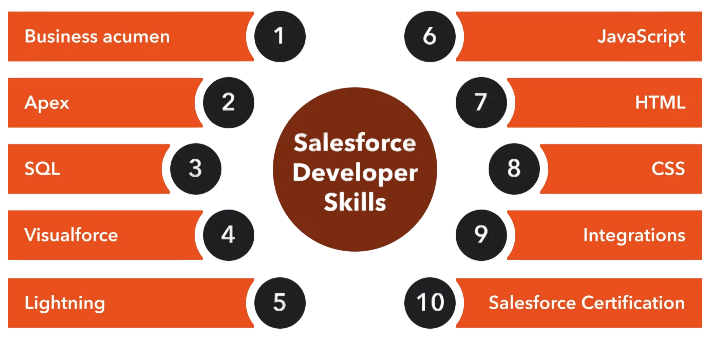
Data Modeling and SOQL Queries
Data modeling and SOQL queries are fundamental components of Salesforce development and administration. Data modeling involves designing and structuring the database to represent business processes effectively. In Salesforce, this means creating and managing objects, fields, and relationships such as lookups and master-detail relationships to organize data logically and efficiently. A well-designed data model ensures data integrity, supports accurate reporting, and optimizes performance. Understanding how different objects relate helps admins and developers build scalable solutions that reflect real-world business scenarios. SOQL (Salesforce Object Query Language) is a powerful tool used to retrieve records from Salesforce databases based on specific criteria, highlighting differences in Salesforce vs. Salesforce Platform. It functions similarly to SQL but is tailored for Salesforce’s multi-tenant architecture. SOQL queries allow users to filter, sort, and aggregate data across objects, enabling precise data extraction for reports, automation, and custom applications. For example, a query can fetch all accounts with opportunities above a certain value or retrieve contacts linked to a particular campaign. Mastery of SOQL is essential for creating efficient queries that avoid hitting governor limits, ensuring system performance remains optimal. Combining solid data modeling with well-written SOQL queries allows organizations to leverage Salesforce data effectively, driving better decision-making and automation. Overall, understanding data modeling principles and SOQL is crucial for anyone working with Salesforce, as they form the foundation for building, querying, and maintaining the platform’s data structures.
Interested in Obtaining Your Salesforce Certificate? View The Salesforce Training Offered By ACTE Right Now!
Salesforce Development Tools and IDEs
Debugging and Troubleshooting
Debugging and troubleshooting are essential skills for Salesforce administrators and developers to ensure smooth system performance and resolve issues quickly. When errors or unexpected behaviors occur, effective debugging helps identify the root cause, whether it’s related to Apex code, workflows, validation rules, or integration problems. Salesforce provides several tools to aid this process, including the Developer Console, Debug Logs, and the Salesforce Inspector extension. Debug Logs capture detailed information about system events and errors during execution, allowing admins and developers to trace issues step-by-step. The Developer Console offers a convenient interface for running tests, inspecting variables, and analyzing code performance, a skill valuable for a Salesforce Developer Resume. Troubleshooting often involves isolating the problem by systematically disabling or modifying components like triggers or automation rules to see their impact. Understanding error messages and Salesforce’s governor limits is also crucial since many issues arise from exceeding these limits during processing. Additionally, monitoring tools like Health Check and Setup Audit Trail help detect security vulnerabilities and configuration changes that may cause problems. Effective debugging requires a logical, patient approach and strong knowledge of Salesforce’s architecture and features. Prompt troubleshooting minimizes downtime, prevents data inconsistencies, and improves user experience by ensuring the platform runs as expected. By mastering debugging techniques, Salesforce professionals can maintain system reliability, optimize performance, and support continuous business operations, making it a critical competency in any Salesforce environment.
Preparing for Salesforce Job? Have a Look at Our Blog on Salesforce Interview Questions and Answers To Ace Your Interview!
Version Control and Deployment
Version control and deployment are critical practices in managing Salesforce development and ensuring smooth, reliable releases. Version control systems (VCS) like Git allow development teams to track and manage changes in Salesforce metadata, code, and configurations systematically. By maintaining a history of changes, VCS enables collaboration among multiple developers, reduces the risk of conflicts, and facilitates rollback to previous versions if needed. This structured approach enhances transparency and accountability, as every change is documented with details about who made it and why. Deployment refers to the process of moving Salesforce components such as Apex code, Lightning components, workflows, and configuration settings from one environment to another, typically from development or sandbox environments to testing or production, as explained in Salesforce Training. Using deployment tools like Salesforce Change Sets, Salesforce CLI, or third-party CI/CD pipelines automates and streamlines this process, reducing manual errors and ensuring consistency across environments. Effective deployment strategies involve proper testing, versioning, and documentation to minimize downtime and disruption to end users. Continuous integration and continuous deployment (CI/CD) practices are increasingly adopted in Salesforce development to enable rapid, reliable releases and quicker feedback loops. By combining version control with robust deployment processes, organizations can improve code quality, enhance collaboration, and accelerate innovation while maintaining system stability and security. Ultimately, mastering version control and deployment is essential for scaling Salesforce projects and supporting agile development methodologies.

